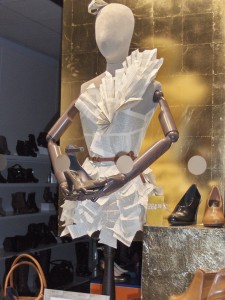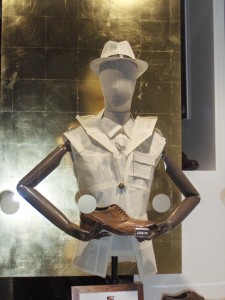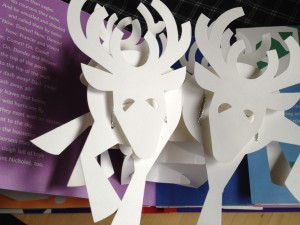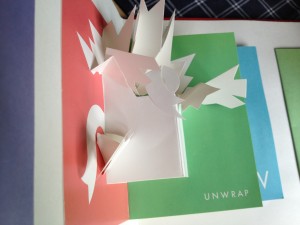‘On the eleventh day of Christmas, my true love gave to me…’ Probably not eleven lords a leaping. Perhaps a book, perhaps a book all about things—last year, Neil MacGregor’s A History of the World in 100 Objects; this year, Edmund de Waal’s The Hare with Amber Eyes. This remarkable book reconstructs the history of a collection of exquisite Japanese carvings that passed down through the generations of a single illustrious family, from their first acquisition in the 1870s to the present day. History–a global history of trade and nationalism and war–swirls round the netsuke as they pass from Paris to Vienna to Tokyo. And de Waal—an accomplished potter—is uniquely qualified to convey that history in tactile terms, fleshing out ever-changing relations between the carvings and the cabinets, rooms, buildings and cities that held them.
For connoisseurs of material textuality, The Hare offers all the pleasures of digging into a typically happenstance family archive. Among the grainy reproductions in my paperback copy there is the neatly-tabulated page of an opera and theatre notebook from 1916, showing that Wagner, Delibes and Shakespeare continued to enchant Viennese audiences in the middle of the First World War. There is the stylish little card that an uncle who had fled anti-Semitic mitteleuropa for Sunset Boulevard sent out to advertise his new collections ‘of Smart Accessories’—‘Belts, Bags, Ceramic Jewelry / Compacts, Handknit Suits and Blouses’. And many other documents are evoked verbally, as they are fished up from beneath the bed by the author’s father, or as they fall out from the magazines on a bookshelf. So de Waal finds ‘sandwiched between June and July 1966 an envelope containing very old documents, official-looking, in Russian’. He shows the documents to an expert: ‘This is the old paper … they changed this in 1870; that is the stamp, that is the fee. Here is the signature of the governor, always so emphatic—look, it has almost gone through the paper … This is a clerk’s copy, poor writing’. In such hands, ‘the dessicated records … flicker into life’.
Elsewhere, though, de Waal is sceptical about the dessicated record. At one point, sketching his grandmother Elisabeth’s epistolary relationship with the poet Rainer Maria Rilke, he turns to consider some books that he inherited from her. He combs through them for clues: ‘comments in the margins, scraps of a forgotten lyric, a lost letter’. But ‘when I do find things, I wish I hadn’t’. There’s a transcribed Rilke poem on a page torn from a diary, ‘black and red like a missal’. There’s a ‘translucent gentian marking a page’ in a Rilke collection, a photograph of the sitting-room in her Proust. ‘I feel like a bookseller judging the sunning of the cover of a book, marking the annotations, assessing its possible interest,’ de Waal comments. ‘It is not only a trespass on her reading, which feels strange and inappropriate, but close to a cliché. I am turning real encounters into dried flowers’. And later: ‘What she loved was poetry, the world of things, hard and defined and alive, made lyrical. She would have hated my fetishising of her books’.
It’s interesting that the word ‘fetishising’ should appear here—and, to my recollection, nowhere else in The Hare—since the word inevitably hovers over any project so closely focused on things. Peter Stallybrass and Anne Rosalind Jones have a fascinating discussion of this subject in their book on Renaissance Clothing and the Materials of Memory; drawing on the work of William Pietz, they trace the roots of the term in European colonialism (it was ‘the natives’ who were guilty of fetishism, whilst colonizers had a properly detached, capitalist attitude to possessions). For Marx, by contrast, fetishization meant the capitalist investment in fungible commodities, the very opposite of attention to the individual object with all of its personal associations, its precious freight of memories.
I wonder whether de Waal’s dealings with his netsuke and his abortive engagement with his grandmother’s books are really so different—why should the first be permissible, the latter out of bounds?




